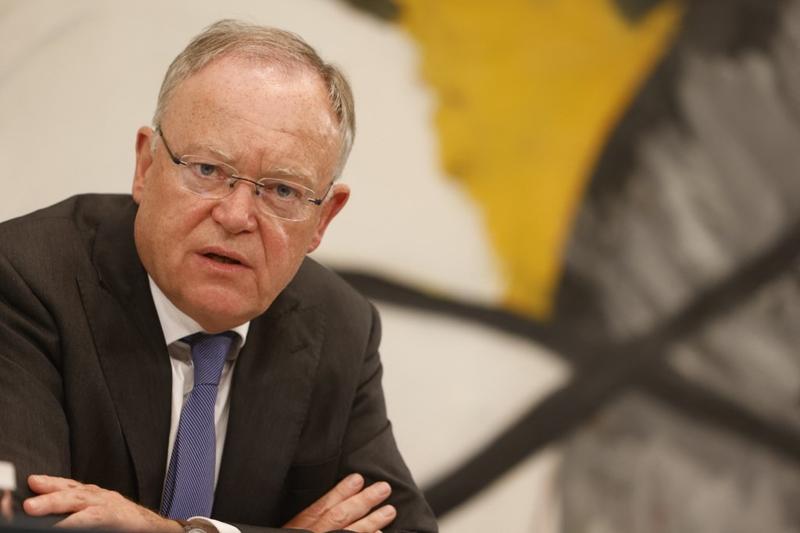 Lower Saxony's State Premier Stephan Weil gives a press conference following a meeting with the State Premiers of the country's federal states, in Berlin, on Oct 4, 2022. (MICHELE TANTUSSI / AFP)
Lower Saxony's State Premier Stephan Weil gives a press conference following a meeting with the State Premiers of the country's federal states, in Berlin, on Oct 4, 2022. (MICHELE TANTUSSI / AFP)
BERLIN - A vote in the German state of Lower Saxony on Sunday will provide a test of support for the crisis management skills of Chancellor Olaf Scholz's ruling coalition, as it seeks to stave off energy shortages and escalation in the conflict in Ukraine.
National issues such as the highest inflation in decades have dominated the campaign in the economically powerful swing state of 8 million people, home to carmaker Volkswagen. On Saturday, sabotage that halted rail traffic in Lower Saxony and elsewhere in northern Germany put the spotlight on security.
Polls had put Scholz's centre-left Social Democrats (SPD) on between 31 percent and 33 percent, suggesting they were on track to land less than the 37 percent they got in the 2017 election but still retain power
Polls had put Scholz's centre-left Social Democrats (SPD) on between 31 percent and 33 percent, suggesting they were on track to land less than the 37 percent they got in the 2017 election but still retain power, partly thanks to the popularity of incumbent premier Stephan Weil.
That would provide a boost for the SPD, which lost the two previous regional votes to the opposition conservatives of former Chancellor Angela Merkel and has slumped in polls to 18-20 percent at national level after scoring 25.7 percent in the 2021 federal election.
But the election - the last regional vote this year - is expected to deliver a mixed message on support for the three-way "traffic light" federal coalition, given the diverging fortunes of the two junior partners.
Exit polls will be published as voting closes at 6 pm (1600 GMT) on Sunday, before official results start to be announced from 6:30 pm.
ALSO READ: German SPD on track for another win in Saarland state
The Greens, whose ministers are the most popular politicians in Scholz's cabinet, are on track to double their share of the vote to between 16 percent and 19 percent - enabling the SPD potentially to ditch their local coalition partners the conservatives and hook up with the environmentalist party instead.
But the pro-business Free Democrats (FDP), which are not a natural fit with the Greens and SPD, risks failing to even reach the 5 percent hurdle to enter parliament, according to polls.
The party is suffering from being often seen as putting the brakes on popular government programs due to its focus on fiscal rectitude, said Philipp Koeker, political scientist at the University of Hanover, the capital of Lower Saxony.
"The FDP could become even more of a difficult partner in the coalition if they fail to enter the state parliament," Koeker said.
Meanwhile, the far-right Alternative for Germany looks set to nearly double its share of the vote to around 10 percent in Lower Saxony, reflecting a surge at national level as it benefits from growing frustrations with the political establishment's management of the economic crisis.


